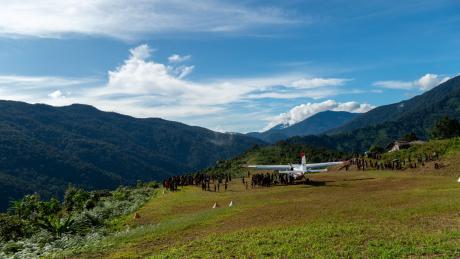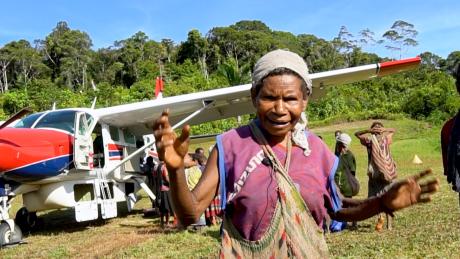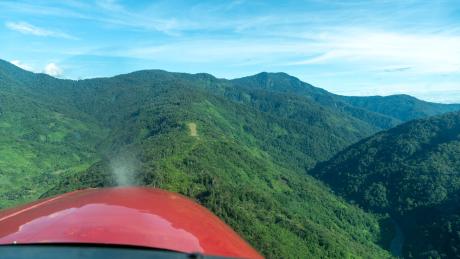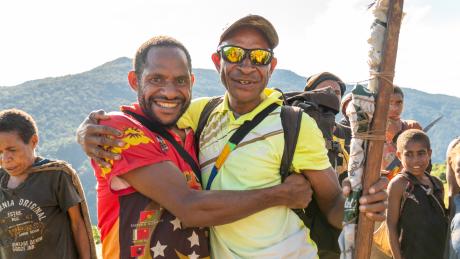
Once bypassed by every plane in the sky, the remote village of Dimanbil now welcomes MAF flights on its own runway as a result of forty years of determination, hope, and community effort.
Story by Mandy Glass
For nearly four decades, the people of Dimanbil in Papua New Guinea’s Sandaun Province held onto a dream, a dream of connection, of light breaking through isolation. With bush knives, sticks, and sheer determination, they worked to carve a runway from the dense jungle. It was a seemingly impossible task.
But in late 2023, that dream took flight when an MAF aircraft landed on their newly built airstrip for the first time.
In May 2025, the people of Dimanbil are still enthusiastic about the sight of an MAF plane touching down in their village.
Wokul Timoti, an elderly women, remembers the beginnings.
“I don’t know my exact birthdate. When I worked on this runway, my hair had not yet turned grey. And now the plane has come. You brought the plane, and I’m so happy and singing because I see you here,” she said in her heart language while gesturing with her hands.

She remembers the days when planes only flew overhead, bypassing their village on their way to other places like Tumolbil, Munbil and Yapsie.
“Before, we lived in darkness and watched the planes fly over us. But now the plane lands here. This change is like the sun shining,” Wokul said.
Others echo her joy. Meton Kenon, who returned to his home village of Nuyol after eight years, recalls the long days he once walked from Dimanbil to Telefomin; four days over ridges and rivers, sleeping in small places along the way.
“That was far,” he said.
Before, we lived in darkness and watched the planes fly over us. But now the plane lands here. This change is like the sun shining.
Now, with the runway open, what once took days can be done in 20 minutes. He is excited for the flight with MAF.
“This makes it much easier for people to travel back and forth. Now I'm getting on the plane to fly to Dimanbil and that's really awesome,” he said.
The younger generation reflects on what this means. Wokul’s son, Nainj Timoti, a student in grade 7, speaks of the four-hour trek to attend primary school in Munbil.
“Climbing up mountains, crossing rivers… that high ridge we must cross to get there. But now planes come. We’re so happy,” he said.
He will have to continue that walk until Dimanbil might one day get its own primary school.
Milton Konsep, the local government representative, acknowledges the decades of effort: “We have worked extremely hard for 39 years for this. And now we’re glad MAF lands here.”
The airstrip, however, is more than just a runway. It’s a shortcut to healthcare, education, markets, and hope.
“We didn’t have a school,” said Meton, remembering his childhood. “We lived in the dense jungle, in the dark. Only now change is slowly happening.”
“I'm really, really happy about our new airstrip. The fact that we have our own new runway shortens many distances.”

Health and education supplies can be dropped off at Dimanbil, and people like Meton save days to travel to the district centre at Telefomin or to other places. The community can support their students at the Telefomin Secondary school with fresh garden produce from home.
“I’m now going to send food for the students to Telefomin, so that makes me happy too,” said Wokul
Despite her age, Wokul is keen to see more impact and transformation coming with the airstrip.
“Don’t forget me. No. You must keep coming to our airstrip, so I can witness even more changes in my life. That’s good! May God watch over you and thank you for bringing the plane. That’s wonderful!”
